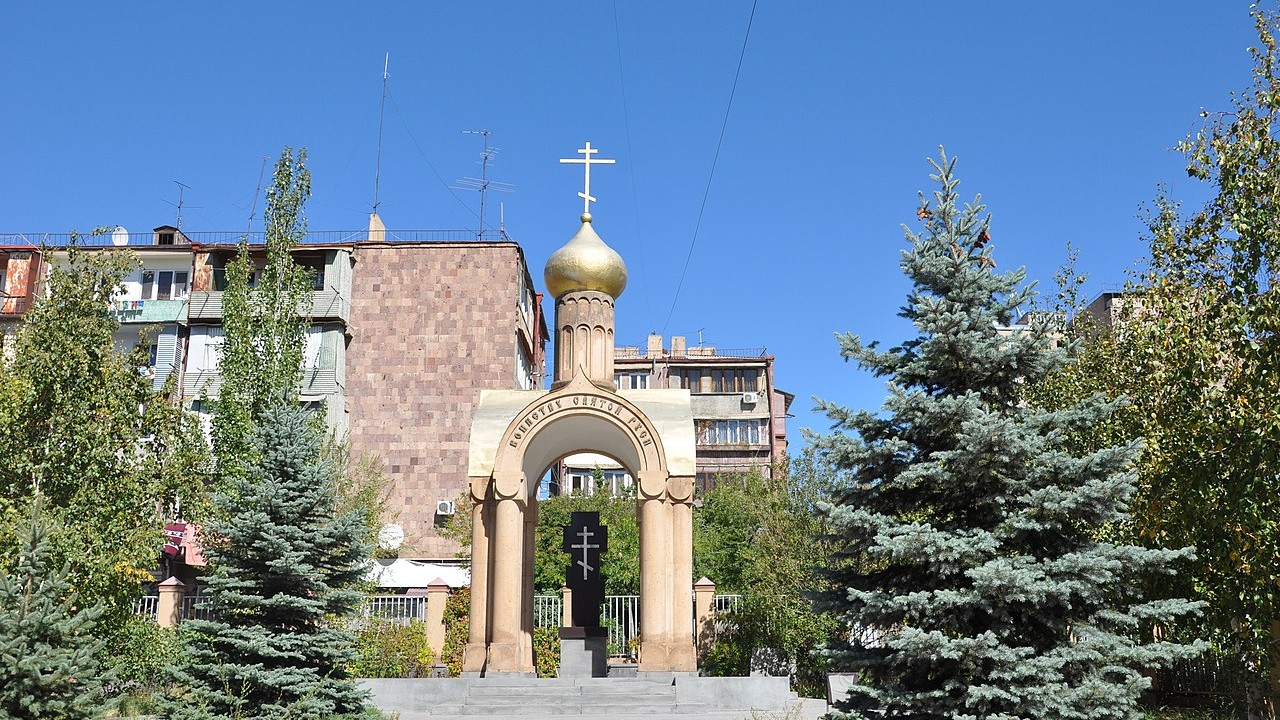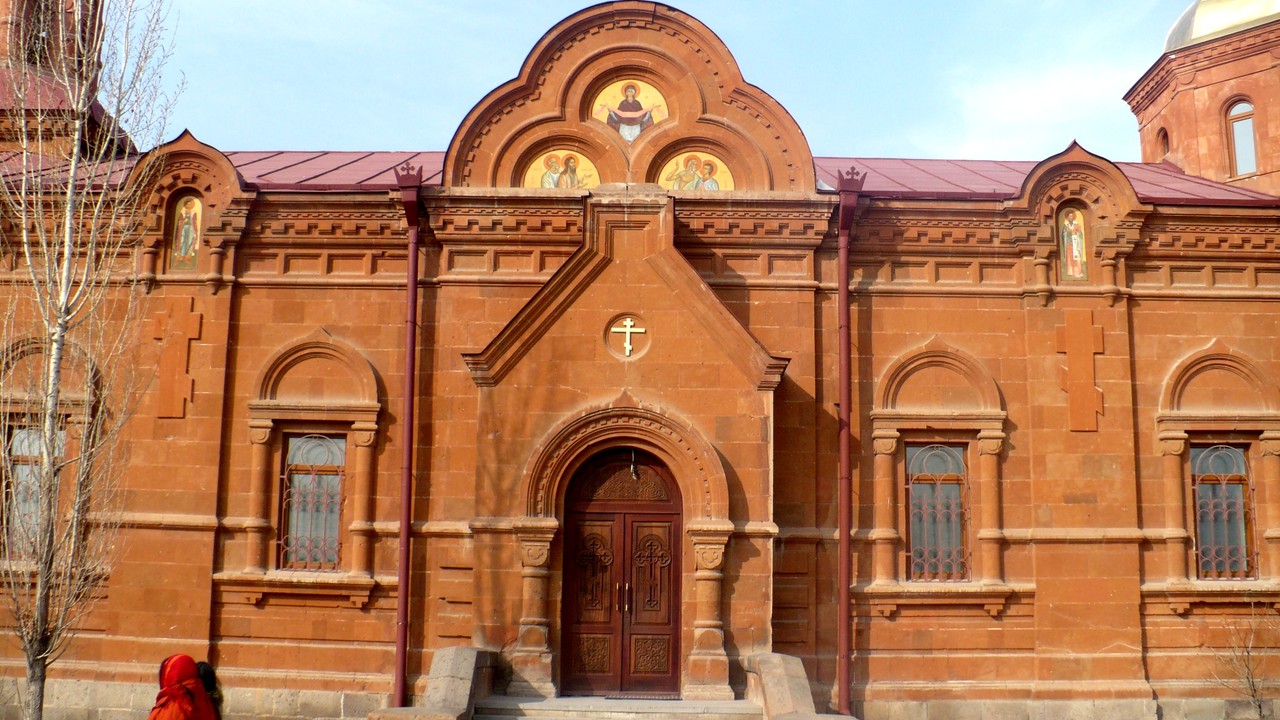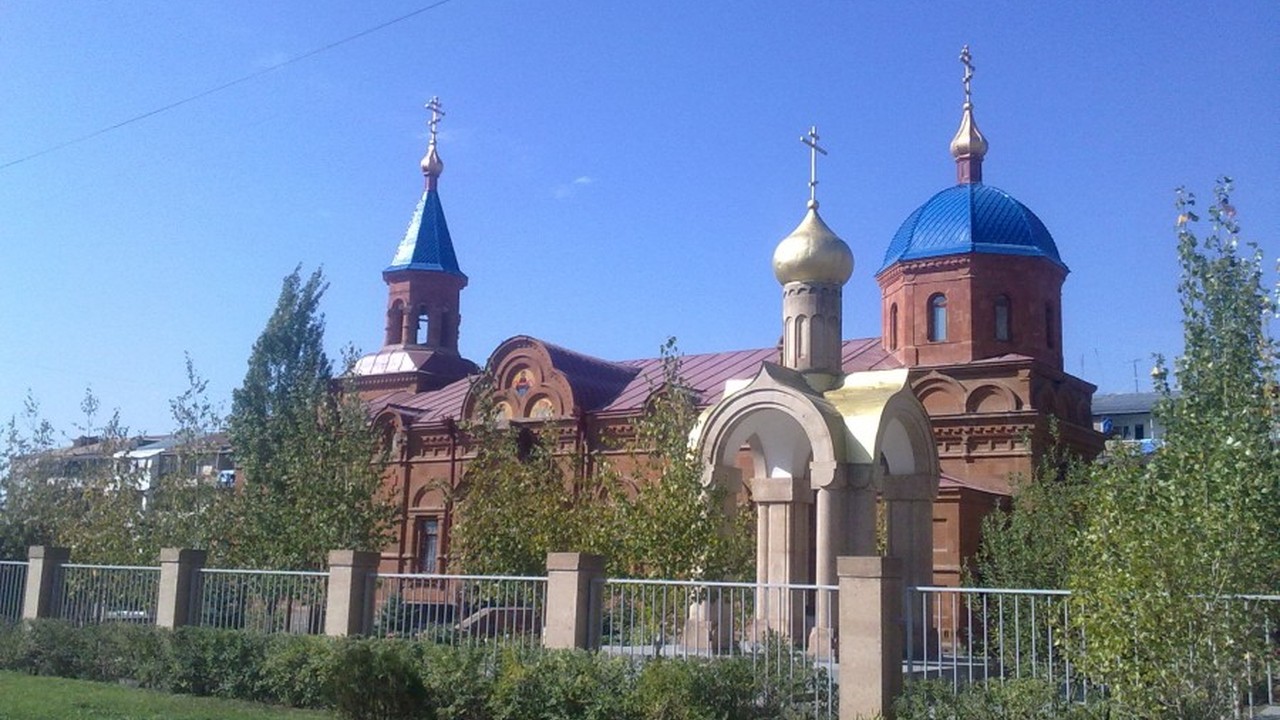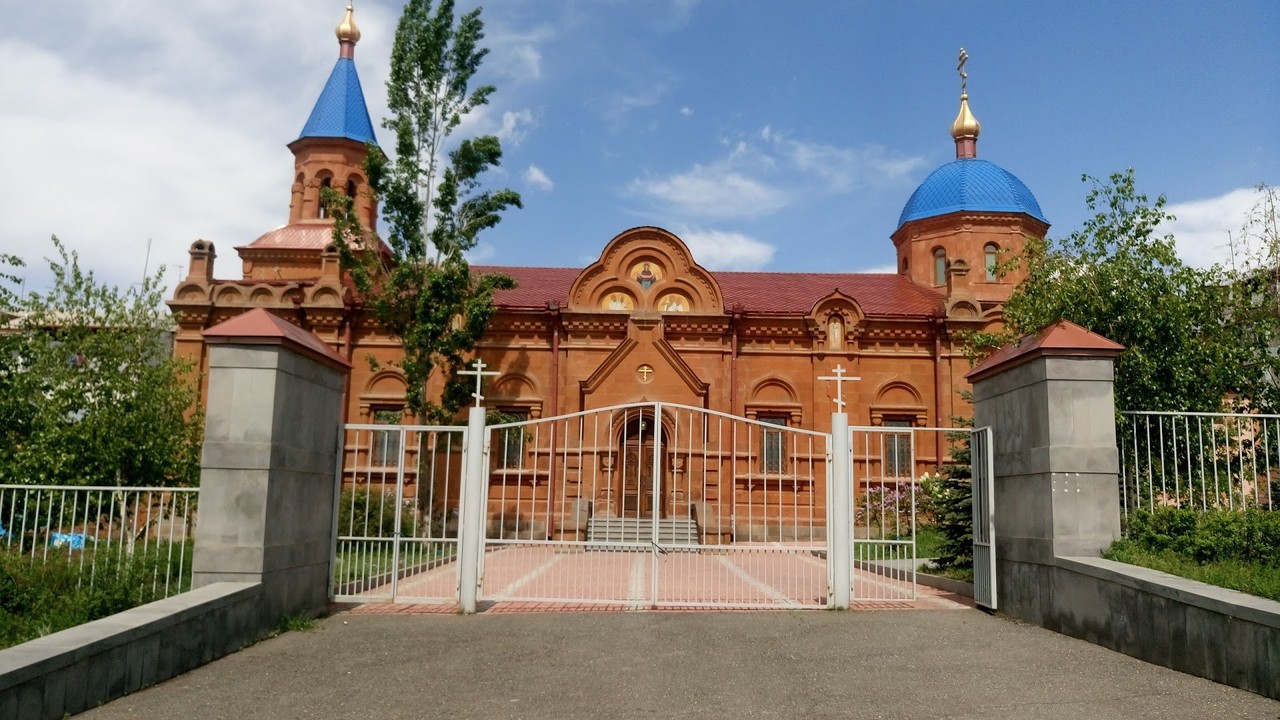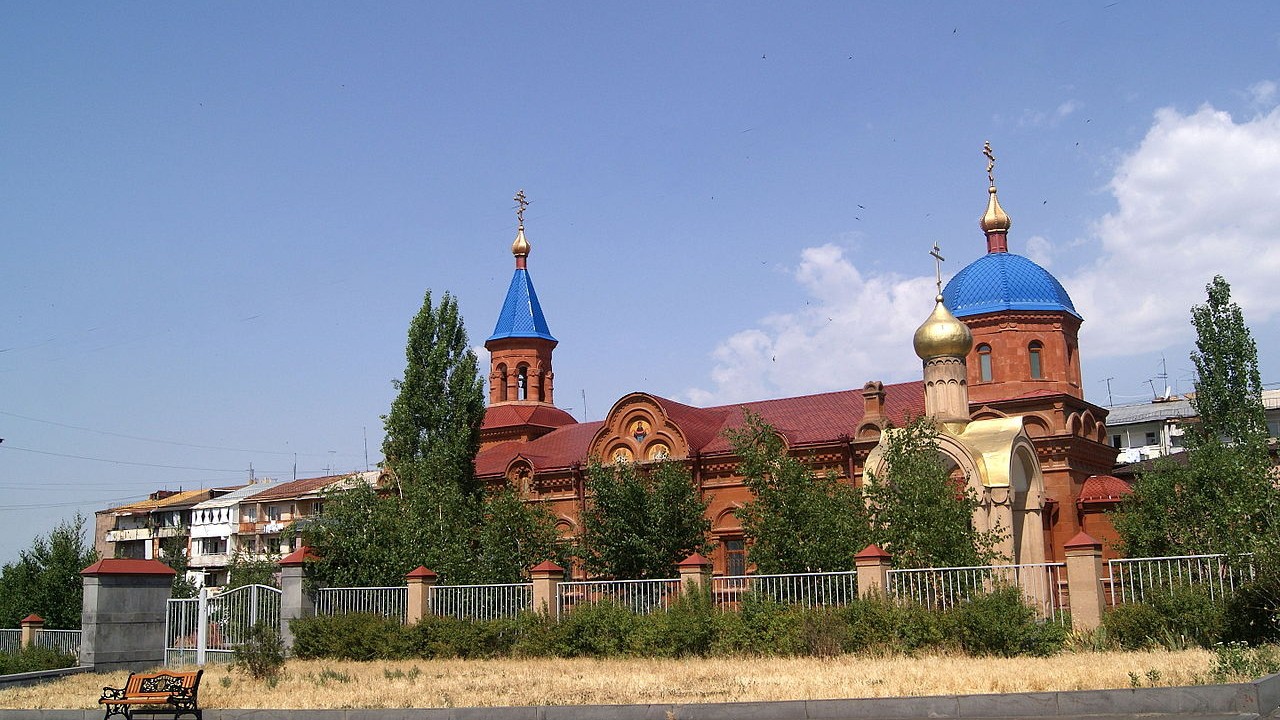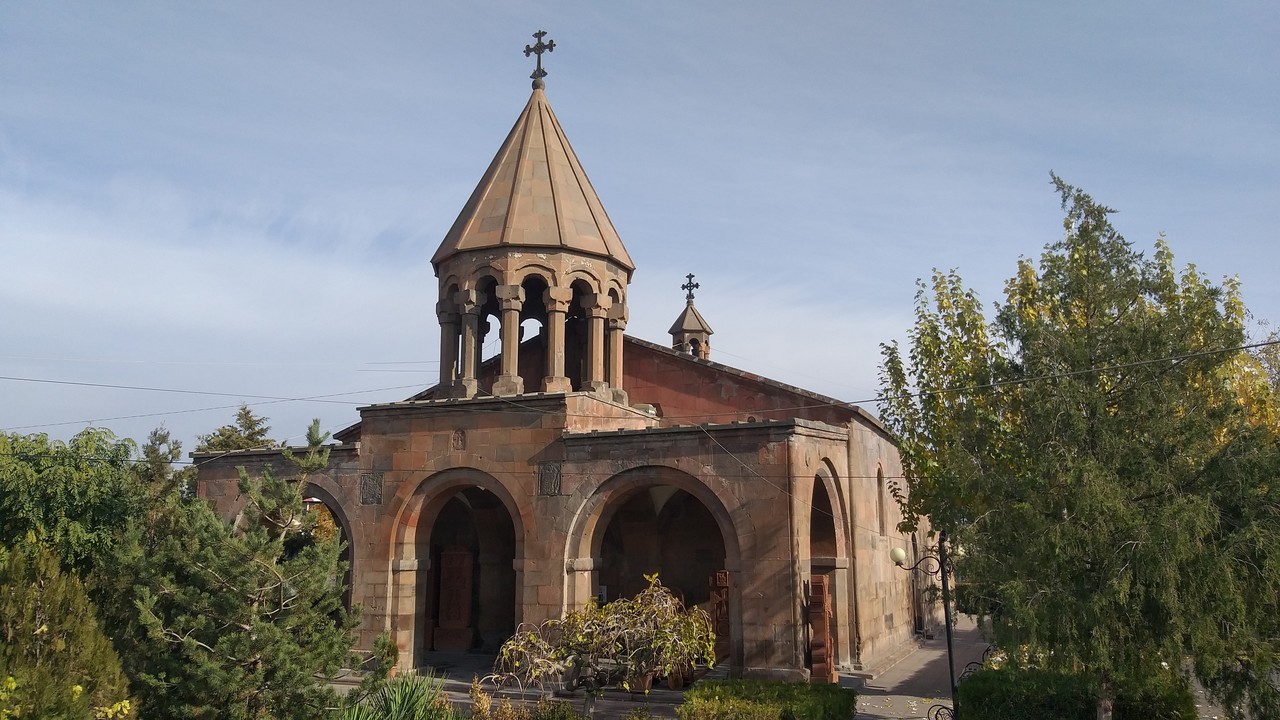PLACES OF WORSHIP

HOLY MOTHER OF GOD, RUSSIAN ORTHODOX CHURCH OF KANAKER
1913-1916
State Index: 1.12.4
Architect: Fyodor Verzhbitsky
Location: 68 Zakaria Sarkavag Street. This is the main Russian Orthodox church building in the Republic of Armenia. It belongs to the Russian Orthodox Church and is currently active.
Among
the Russian churches in the Russian Empire, particularly in Eastern Armenia,
garrison churches played a significant role. These were built in locations
where Russian garrisons were stationed, following a model design approved by
the Russian construction commission in 1901 (architect: Fyodor Verzhbitsky). By
1917, 69 churches were built using this design across the Russian Empire.
In
Armenia, churches built according to Verzhbitsky’s standard design include this
Holy Mother of God Russian Orthodox Church of the 1st Poltava Regiment in
Kanaker (1913-1916) and the Church of St. Arsenius of Serbia or the Church of
the Epiphany (1907-1910) located in the 102nd Russian military base in Gyumri.
Prior
to the construction of this church, a mobile military church of St. Alexander
Nevsky, established in 1882, served the Russian garrison in Kanaker village.
From 1905, it was housed in one of the barracks and consecrated on January 29,
1906.
To
meet the spiritual needs of the 700 officers and soldiers of the Poltava
Regiment, the current Holy Mother of God Church was built in 1913-1916. For
nearly a century, it remained part of the Russian military unit in Kanaker
(117-123 Zakaria Sarkavag Street). Construction was supervised by Vasili
Mirzoyan. During the Soviet era, the building was used as a military hospital,
club, cinema, and warehouse.
The
church reopened in 1991 and was restored in 2000. It has been separated from
the military complex.
The
church is a spacious structure, externally emphasized by a pentagonal apse and
four sacristies. The facades are notable for their rich decorative
ornamentation, prominently featuring characteristic elements of Russian
ecclesiastical architecture. The three entrances (north, south, and west) are
accentuated, with their rectangular openings crowned by murals. The interior
walls are plastered, and the floor is tiled. Twin domes rise at the eastern and
western ends of the tin-covered roof, which were renovated in the early 2010s
without consideration for their original appearance.
The
church is constructed of orange, finely-cut tuff stone in midis masonry. Its
dimensions are 35.9 × 15.7 meters.
In
2004, a chapel dedicated to fallen Russian soldiers was built in the
churchyard, to the right of the entrance. Named the Holy Cross Chapel (“To the
Army of Holy Russia”), it is designed in the spirit of traditional Russian
Orthodox architecture, raised on four columns. The project was sponsored by
former Moscow Mayor Yuri Luzhkov and Yevgeny Gladunchik, head of the “Electric
Networks of Armenia” company. The area around the church has been improved with
paving, and the territory has been fenced.
“Scientific Research Centre of Historical and Cultural Heritage” SNCO
Yerevan Municipality



